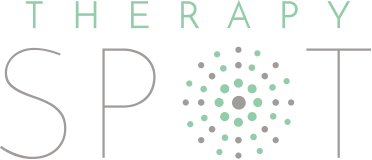Trilingualism and language development
With our ever-growing multicultural and mobile society, raising trilingual children is a reality for many of our families. Parents are faced with many choices with regards to language acquisition. Do we promote one language in particular? If so, which one? Do we use the “one parent- one language” approach where each parent only speaks his or her language to the child? Or do we speak all languages to the child? Where do they learn the community language?
In terms of research, this field is growing more and more, but there is still a long way to go. Most studies have focused on bilingualism or one aspect of trilingualism in particular and are often relatively low levels of evidence, such as case studies of particular children. Despite this, there is still much that we can learn from these, as they are the building blocks for further study. They can help navigate difficult decisions that are ultimately the choice of the individual family. We DO know that bilingualism itself does not CAUSE language delay and there is no evidence currently available to suggest one particular way of raising a bilingual (or trilingual) child is better than another.
The typically developing trilingual child
Factors that impact the development of language in trilingual children include the level of exposure the child has to the language, the prestige of the language and how the caregivers react to the child’s choice of language. How parents react to the use of another language (for example use of the second parent or community language), known as ‘language mixing,’ has been given some consideration. Generally, a child will mix languages regardless of which approach is adopted, whether it be the “one parent- one language” approach or if parents speak a variety of languages to the child. A study by Sarah Chevalier (2013) found that the conversational style of the parent/caregiver and how they responded to language mixing were important factors in determining whether or not the child spoke that language. It was found that languages with less input throughout the day needed to be actively promoted in conversation in order for the child to use that language. This was achieved through techniques such as; asking for translation and adult repetition. However, this study was conducted with one particular family and therefore caution must be taken when generalizing to the wider population.
What about if my child has a language delay or disorder?
An area that has not been researched deeply is trilingualism in children/individuals with a language delay or disorder. There has been some research in this area with respect to bilingualism, but we must be careful not to generalize. A lot is still unknown and needs further investigation.
One aspect to consider for trilingual children with language delay or disorder is the parent’s response to their child’s language mixing, especially if they have adopted the “one parent- one language” approach. In early communication development when there is a suspected or confirmed language delay, it is important to respond to any and all attempts at communication. It is recommended that a parent repeat what the child has said in their chosen language and then again in their own language, so as not to discourage the child from communicating. This itself is a technique used in language mixing.
It is well known that speech and language assessment and therapy must be tailored to the individual multilingual family in order for it to be functional and beneficial. It is very difficult to find an assessment to match each individual person, with regards to the languages they speak and how they communicate within their community. Exactly how to go about adapting assessment and therapy is not so clear-cut. This must be discussed with the family, as they are the best source of knowledge when it comes to their child and are the child’s main communication partners. Decisions such as; which language they want to conduct the assessment in and how they want to go about delivering therapy, must be made with family involvement. This goes in line with client and family centered care, which is identified as best practice in Speech-Language Pathology.
At Simone Friedman SLS, we understand there are many challenges and decisions to make when it comes to raising a trilingual child, especially if there is a suspected delay. We want to work with families in order to provide the most comprehensive and effective care. For more information about services offered at Simone Friedman SLS, visit https://simonefriedmansls.com or call 416-546-3044.
References
Chevalier, S. (2013). Caregiver responses to the language mixing of a trilingual child. Multilingua, 32(1): 1-32. doi: 10.1515/multi-2013-0001
Goral, M & Conner, P. S. (2013). Language Disorders in Multilingual and Multicultural Populations. Annual Review of Applied Linguistics, 33, 128–161. doi: 10.1017/S026719051300010X
Paradis, J., Genesee, F., & Crago, M. (2011). Dual Language Development and Disorders: A handbook on bilingualism & second language learning. Baltimore, MD: Paul H. Brookes Publishing.



